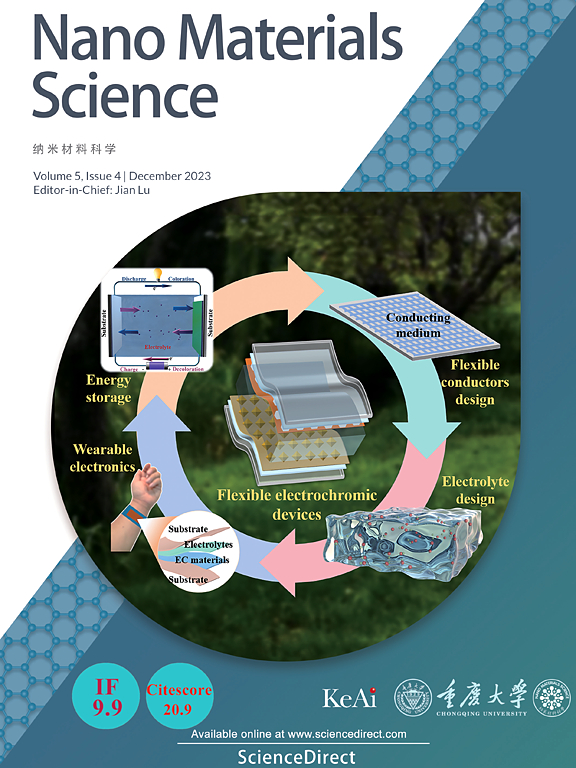在单个硅芯片上集成微电子和光子电路,实现高速和低功耗光电技术
IF 17.9
2区 材料科学
Q1 Engineering
引用次数: 0
摘要
将微电子器件和相关技术结合到单个硅芯片上提出了重大挑战。然而,近年来,硅光子学领域经历了显著的进步和显著的性能飞跃。讨论了基于绝缘体上硅(SOI)的光子器件的性能,如快速硅光调制器、光子收发器、光滤波器等。这将是制造独立硅光子器件的一个进步,增强了单片纳米光子集成电路的可能性。假设设计并制造了集成硅光子芯片。在这种情况下,它可能会彻底改变这些组合光子元件的成本、功耗和尺寸,给下一代通信领域带来实质性的、也许是革命性的变化。然而,光子和电路的单片集成是一个重大的技术难题。必须仔细考虑一系列复杂的因素,以确定采用硅基集成产品解决方案的应用程序最有可能成功。与当前工艺流程、工艺生成(有时称为光刻节点生成)和封装要求相关的工艺限制是需要考虑的几个因素。本文重点介绍了集成硅光子器件的最新发展及其成熟的应用,包括但不限于光子波导、光子放大器和滤波器、片上光子收发器以及多维量子系统中硅光子的最新技术。所研究的器件旨在通过打开片上硅光子学的下一阶段并使基于硅光子学的器件在各种光学系统中的应用,加速硅光子学从学术界向工业的转移。本文章由计算机程序翻译,如有差异,请以英文原文为准。
The integration of microelectronic and photonic circuits on a single silicon chip for high-speed and low-power optoelectronic technology
The combining microelectronic devices and associated technologies onto a single silicon chip poses a substantial challenge. However, in recent years, the area of silicon photonics has experienced remarkable advancements and notable leaps in performance. The performance of silicon on insulator (SOI) based photonic devices, such as fast silicon optical modulators, photonic transceivers, optical filters, etc., have been discussed. This would be a step forward in creating standalone silicon photonic devices, strengthening the possibility of single on-chip nanophotonic integrated circuits. Suppose an integrated silicon photonic chip is designed and fabricated. In that case, it might drastically modify these combined photonic component costs, power consumption, and size, bringing substantial, perhaps revolutionary, changes to the next-generation communications sector. Yet, the monolithic integration of photonic and electrical circuitry is a significant technological difficulty. A complicated set of factors must be carefully considered to determine which application will have the best chance of success employing silicon-based integrated product solutions. The processing limitations connected to the current process flow, the process generation (sometimes referred to as lithography node generation), and packaging requirements are a few of these factors to consider. This review highlights recent developments in integrated silicon photonic devices and their proven applications, including but not limited to photonic waveguides, photonic amplifiers and filters, on-chip photonic transceivers, and the state-of-the-art of silicon photonic in multidimensional quantum systems. The investigated devices aim to expedite the transfer of silicon photonics from academia to industry by opening the next phase in on-chip silicon photonics and enabling the application of silicon photonic-based devices in various optical systems.
求助全文
通过发布文献求助,成功后即可免费获取论文全文。
去求助
来源期刊

Nano Materials Science
Engineering-Mechanics of Materials
CiteScore
20.90
自引率
3.00%
发文量
294
审稿时长
9 weeks
期刊介绍:
Nano Materials Science (NMS) is an international and interdisciplinary, open access, scholarly journal. NMS publishes peer-reviewed original articles and reviews on nanoscale material science and nanometer devices, with topics encompassing preparation and processing; high-throughput characterization; material performance evaluation and application of material characteristics such as the microstructure and properties of one-dimensional, two-dimensional, and three-dimensional nanostructured and nanofunctional materials; design, preparation, and processing techniques; and performance evaluation technology and nanometer device applications.
 求助内容:
求助内容: 应助结果提醒方式:
应助结果提醒方式:


